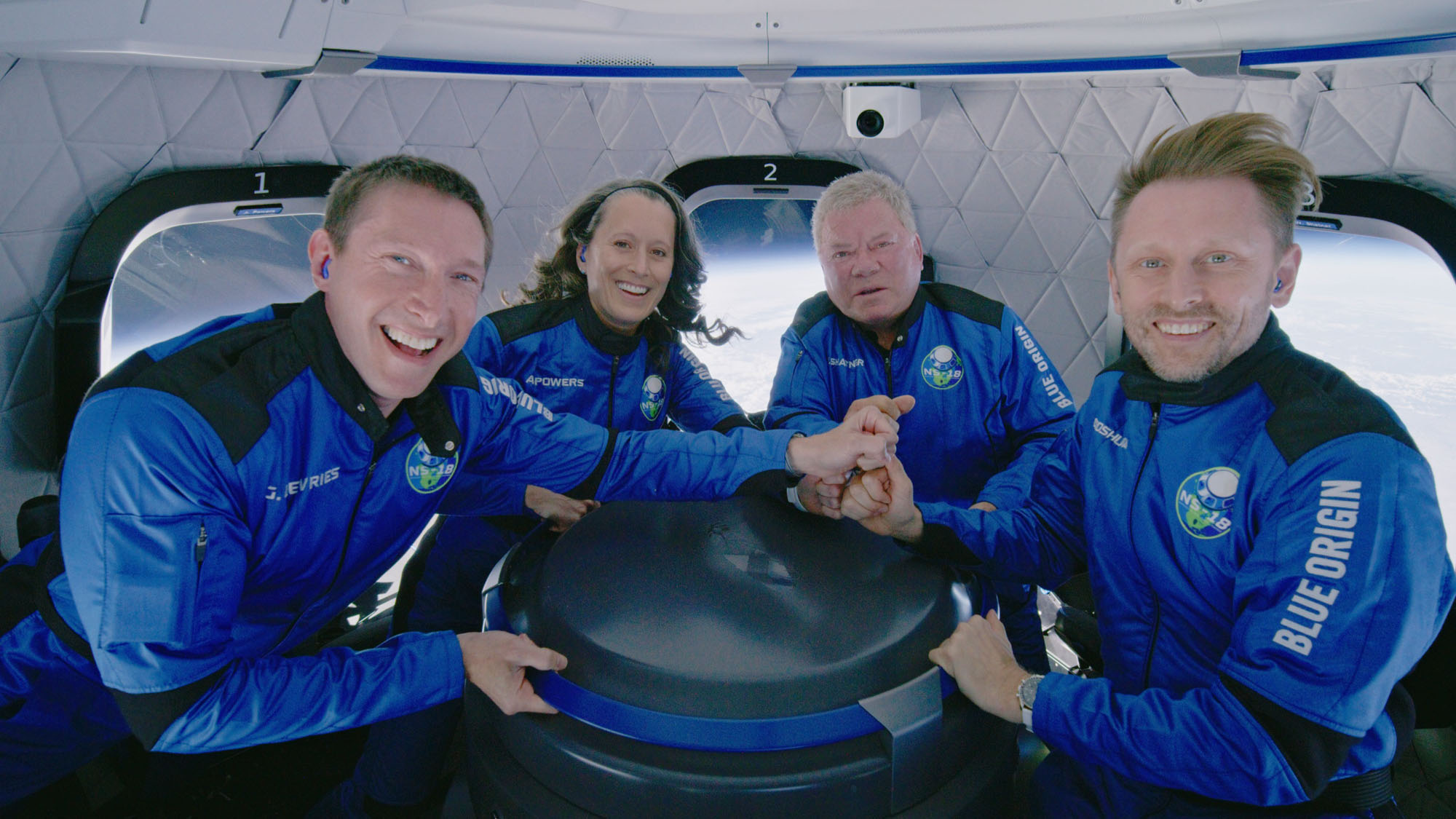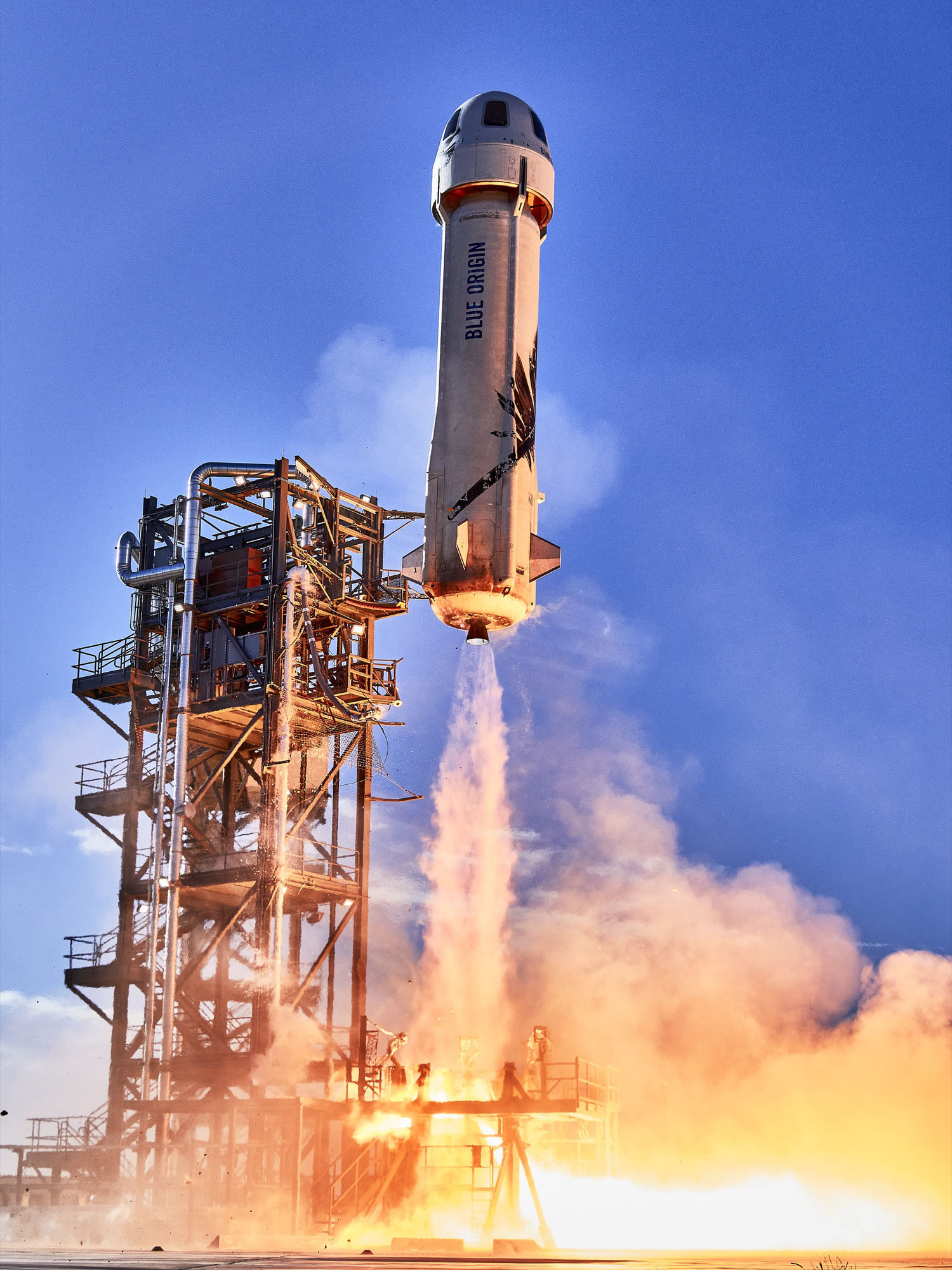
William Shatner oldest astronaut at 90 – Here's how space tourism could affect older people

This article was originally published at The Conversation. The publication contributed the article to Space.com's Expert Voices: Op-Ed & Insights.
Nick Caplan, Professor of Aerospace Medicine and Rehabilitation, Northumbria University, Newcastle
Christopher Newman, Professor of Space Law and Policy, Northumbria University, Newcastle
Is space really the final frontier? William Shatner has found out after boldly going where no 90-year-old has gone before. Some 55 years after Captain James T Kirk hit our screens in the original "Star Trek," Shatner recently launched to the edge of space aboard Blue Origin's New Shepard for a 10-minute suborbital flight.
Shatner has become the oldest person to go to space, breaking the record set only recently by 82-year-old Wally Funk, who traveled on the New Shepard's first crewed spaceflight in July. Funk was one of the Mercury 13 women who qualified for spaceflight in the 1960s but never flew.
With commercial spaceflight companies now taking older people to space, it's timely to consider the potential physical impact space flight might have on them.
Video: Watch William Shatner gaze at Earth from space in awe
In photos: William Shatner's space launch with Blue Origin
Get the Space.com Newsletter
Breaking space news, the latest updates on rocket launches, skywatching events and more!
In just a few days in space, the human body starts to adapt. Astronauts' bones start to lose density and their muscles become smaller and weaker because they're not being used to stand up against gravity or to move around.
While these changes aren't much of a problem in microgravity, they can lead to increased risk of injury, such as back pain or bone fracture, when returning to Earth. Astronauts spend considerable time exercising in space to minimize these adaptations, which are similar to age-related changes affecting people on Earth, but happen much more quickly.
A 90-year-old person with normal age-related health changes might arrive in space with their muscles and bones already deconditioned. This could present additional risks as their body adapts further when deprived of gravity. While we can speculate, not nearly enough older people have gone to space for us to know for sure how their bodies will cope.
Anyone like Shatner who only spends a few minutes in microgravity won't need to worry about this too much. The greatest risks to their health are the mental and physical stresses experienced during launch, re-entry into Earth's atmosphere, and landing.

During launch, Shatner and his three co-passengers would have experienced vibrations resulting from the thrust generated by New Shepard's BE-3 engine, which is equivalent to more than 1 million horsepower, or more than 2,000 times as powerful as the 480 horsepower of a Tesla Model 3.
This would lead them to experience an acceleration or g-force of 3g. It's a tricky concept to explain, but essentially, this feels like three people the same size as you sitting on your chest, pushing you into your seat. During re-entry into the atmosphere, the g-force reaches 6g.
High g-forces can have profound effects on the human body. At high g-forces, blood can be pulled away from the head which can starve the brain of oxygen. This can lead to visual changes including tunnel vision, loss of color (greyout) or complete loss of vision (blackout), and in some cases, a g-force-induced loss of consciousness. This can occur at as little as 3g.
However, during simulations of sub-orbital flight paths on a centrifuge in people aged 20-78, older people were actually found to better tolerate the high g-forces experienced during re-entry through the atmosphere.

When New Shepard's engines switch off towards the end of its ascent, allowing it to slow down and start falling back to Earth, the high G-forces abruptly disappear and the passengers feel weightless. In trained astronauts, this rapid entry to microgravity often leads to space sickness.
The lack of gravity means the position sensors in the ears (called our vestibular system) get confused and can't tell if you're moving, or which way is up or down. Older untrained space tourists, who could already have vestibular impairments, may be more susceptible to space sickness.
Blue Origin and Virgin Galactic — the spaceflight companies founded by Jeff Bezos and Richard Branson, respectively — are providing only brief glimpses of space. Nonetheless, they will make valuable contributions to our understanding of the health effects of human spaceflight among increasingly diverse groups of people.
This article is republished from The Conversation under a Creative Commons license. Read the original article.
Follow all of the Expert Voices issues and debates — and become part of the discussion — on Facebook and Twitter. The views expressed are those of the author and do not necessarily reflect the views of the publisher.
Join our Space Forums to keep talking space on the latest missions, night sky and more! And if you have a news tip, correction or comment, let us know at: community@space.com.

Nick is an Executive Board member of the UK Space Life and Biomedical Sciences Association, where he chairs a steering group developing a national strategy for space biomedicine related to ageing. He is also an editorial board member of the journal Sports Engineering, Journal of Functional Morphology and Kinesiology, and the World Journal of Orthopaedics, and is Associate Editor for the Journal of Orthopaedics and Trauma.
